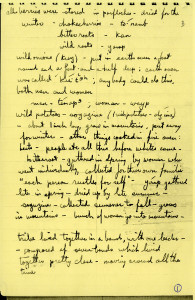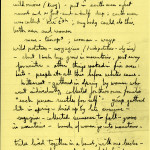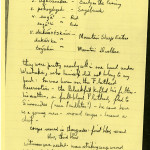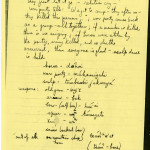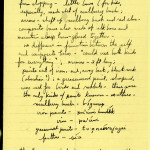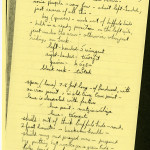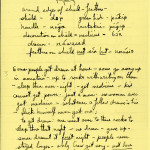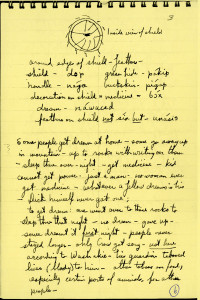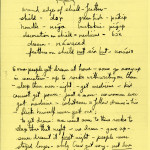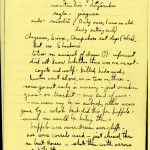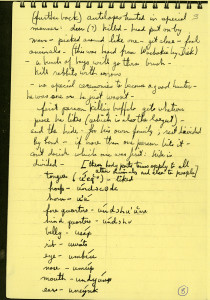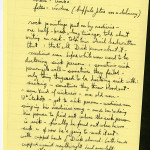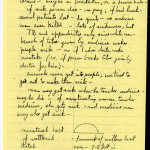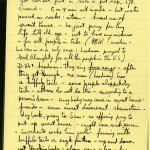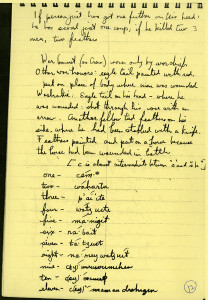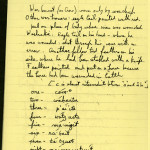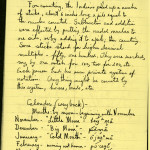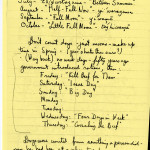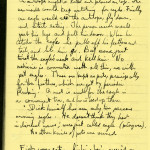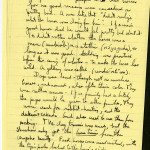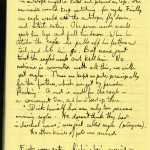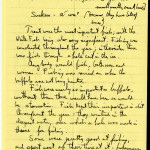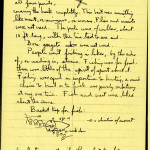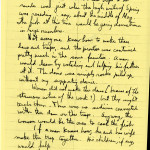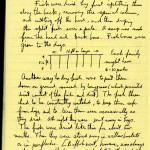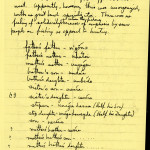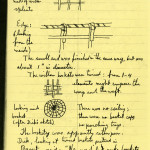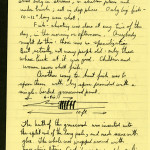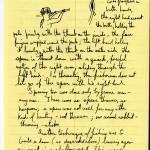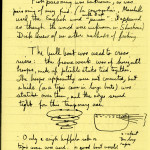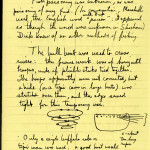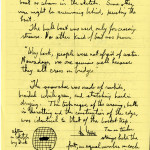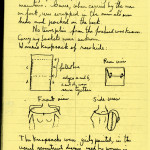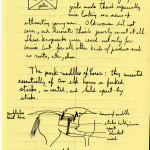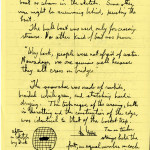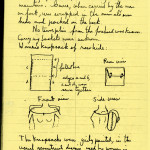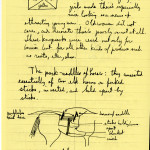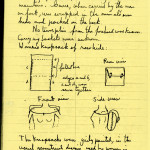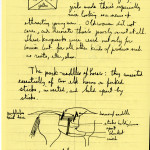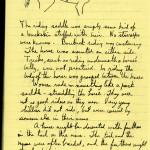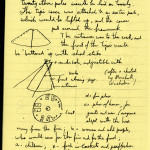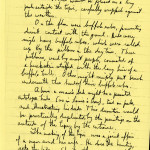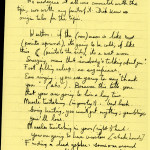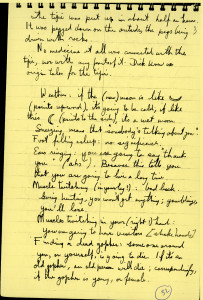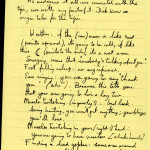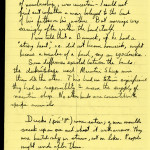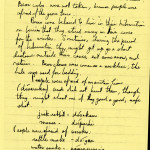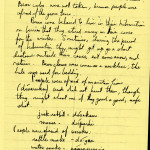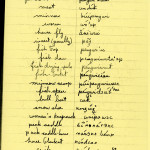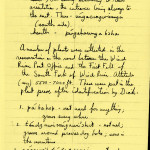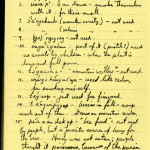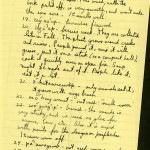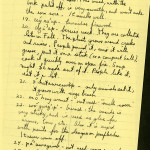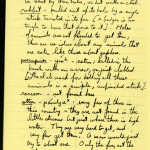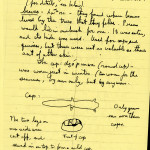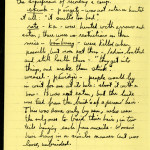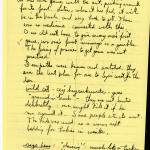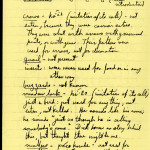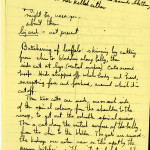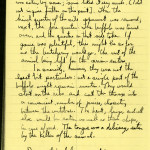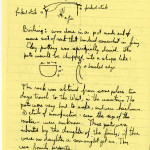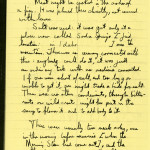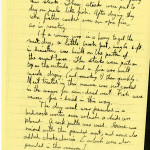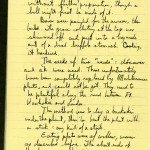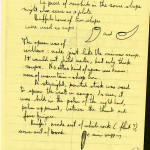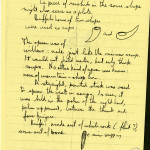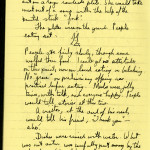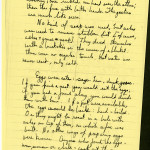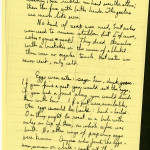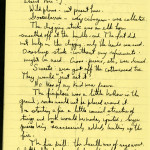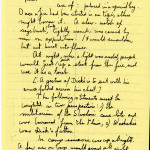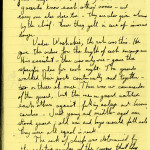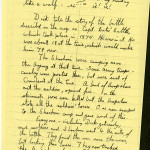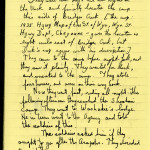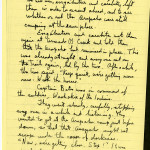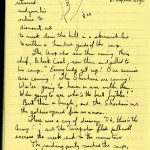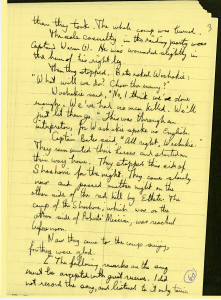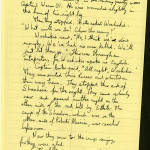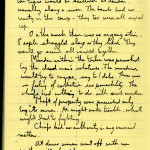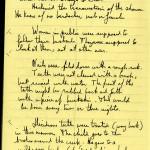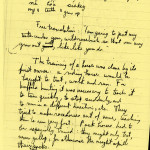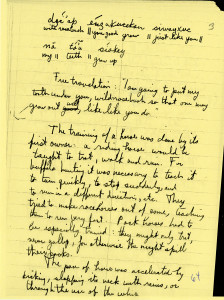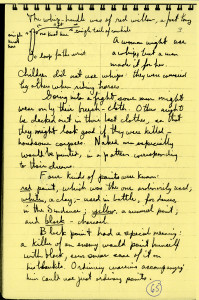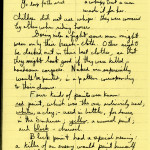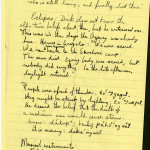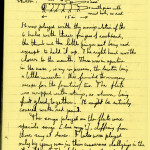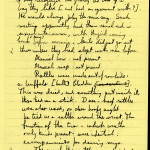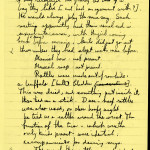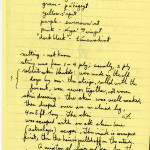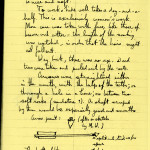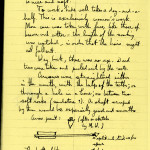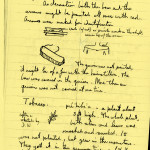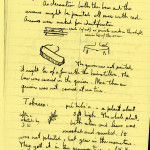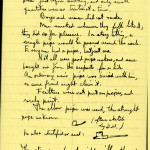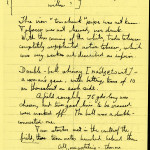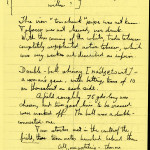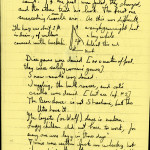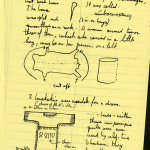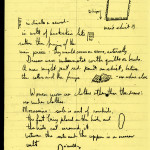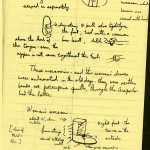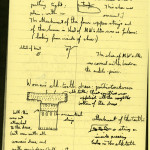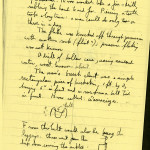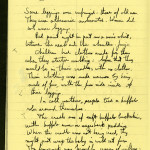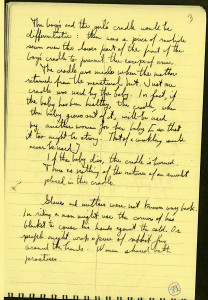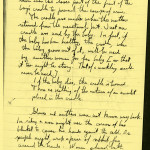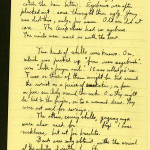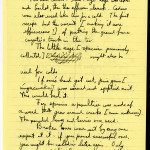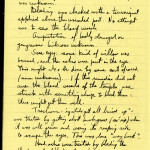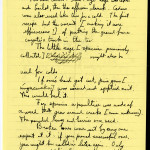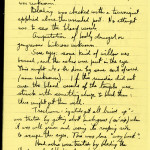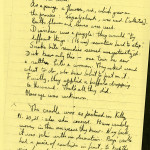Dimitri Shimkin was a professor of Anthropology at the University of Illinois (1960) who worked on the Wind River Indian Reservation during the 1930s and early 40s. Born in Siberia in 1916, Shimkin emigrated with his family shortly after the Russian Revolution. He received his bachelor and doctoral degrees from the University of California at Berkeley under the tutelage of Robert H. Lowie and Alfred Kroeber (1936 and 1939). His work in anthropology was interrupted by WWII in which he was commissioned and received the rank of Lt. Colonel in the Military Intelligence Division, U.S. Army. After the war, in 1947, Shimkin was appointed a fellow and staff member of the Institute for Advanced Studies at Princeton.
Publications relating to Shimkins work at Wind River include: 1938 Wind River Shoshone Geography, American Anthropologist 40(3): 413-415 and 1939 Some Interactions of Culture, Needs and Personalities Among the Wind River Shoshone. Ph.D. dissertation, University of California, Berkeley.
Shimkin’s field notes, spiral bound notebooks collected before the advent of the taper recorder, are archived at the American Heritage Center at the University of Wyoming in Laramie. We have included selections from these notes that pertain to traditional life-ways of the Eastern Shoshone. As requested in Shimkin’s bequest, names of informants are identified only by initials and no personal information has been included. These selections which have been approved for classroom use by the Shoshone Homelands Project funded by a National Park Service Tribal Heritage Preservation grant in partnership with JHHSM.
1.Plant and berries: wild onions and how they were cooked; wild potatoes; bitterroot, yampa (pp. 1)
2. Shoshone bands: names of 5 Shoshone bands; Washakie’s parentage; counting coups (pp. 1-2).
3. Horse and weapons: how acquired, horse and Shoshone vocabulary for war and weapons; bow from choke cherry or red elm, elk and sheep horn, points, how to hold the bow, spears, shields (pp 3-6).
4. Dreams: at home and in the mountains.
5. Taboos on food and animals not eaten: coyote, wolf, mountain lion, eagles, owls, dogs (pp.6-7).
6. Hunting antelope deer and buffalo: Shoshone vocabulary for parts of the buffalo (pp. 8-9).
7. Rock paintings and doctoring the sick: TB and appendicitis are recent; menstrual hut and sweat lodges, use of buffalo tails and eagle feathers in the sweat lodge (pp.9-11).
8. War bonnets and the symbolism of feathers (pp. 12).
9. Counting in Shoshone, names of the months, and seasons, weekdays (pp. 12-14)
10. Horses: horse travois, pack horses (pp.15).
11. Eagles: kept as pets; how to catch eagles (pp. 15-16).
12. Fish and fishing techniques: traps, nets, and harpoons, etc. (pp 16-26).
13. Bull boats and how to make them: (pp.26-27).
14. Snowshoes and how to make them (pp. 27-28).
15. Women’s knapsacks and how to make them (pp.27-28).
16. Pack saddles and riding saddles (pp. 28-29).
17. Tipis: how to make them and what goes in them (pp. 30-32).
18. Weather: (pp. 32)
19. Animals: how they were used and Shoshone vocabulary: ducks, geese, jack rabbit, bears, moose, snakes (pp. 32-34).
20. Shoshone vocabulary: misc. and plants (pp. 34-38)
21. Animals: how they were used and Shoshone vocabulary: squirrels, badger, rabbits, porcupines, otters, beaver, skunk, rats (pp 38-41).
23. Animals and birds: how they were used and Shoshone vocabulary: wild cat; sage hens; crows; meadowlarks; swallows; robins (pp. 42-44).
24. Butchering buffalo: how to butcher; how to cook; protocals, two meals a day-times to eat; mixing meet with berries for pemmican; bone pounded for marrow; storing grease in buffalo stomach; (pp.44-48).
25. Collecting seeds and eating utensils: buffalo horn cups, willow spoons for thick soup; protocols for eating and meals; washing dishes (pp. 48-50).
26. Washing and personal hygiene: ashes and ‘grease soap’ used to removed stubborn dirt (pp. 50-51).
27. Food sources: eggs from sage hens, cooking eggs, soup and soup stirrer; gooseberries; digging roots; sweets from cottonwood trees (pp.51-52).
28. The fireplace and the fire drill: torches; listening for the enemy at night (night watch and protocols) (pp. 52-55).
29. An attack by the enemy: tracking the Arapaho to Muddy Creek: the Bates Battle, singing after the battle (pp.55-59).
30. Criminal behavior: how it was dealt with (pp.60).
31. Dances and drummers (pp.60-61).
32. Nails and teeth: filing nails with a rough rock; burying children’s baby teeth: “I am going to put my tooth under you, wild rosebush, so that one may grow out well, like you do” (pp.62-63).
33. Training horses: how whips were made (pp. 63-64).
34. Fighting (hand to hand) (pp. 64).
35. Paints: red, white, yellow, and black (pp.64).
36. Eclipses and thunder (pp. 65)
37. Musical instruments: flutes, rattles, drums, whistling (pp. 65-68).
38. Colors: Shoshone vocabulary (pp. 69)
39. Rabbit skin blankets: how they were made, working hides (pp. 68-70).
40. Making arrows: decoration, and paint; quiver cases (pp. 70-71).
41. Tobacco: gathering and drying it; protocols of smoking; types of pipe (pp.71-72).
42. Shoshone games: double-ball shinny; dice (pp.72-74).
43. Clothes, moccasins, and dress patterns: women’s dress; high-top and regular moccasins; men’s breech clout; leggings; buffalo robes (pp.74-80).
44. Cradles: and cradle protocol (pp.80-81).
45. Beards and eyebrows (pp.82).
46. Shells and beads (pp.82).
47. “Home Remedies”-or what to do until the shaman comes: cols, sprains and poultices; broken bones; broken skulls; bleeding; sore eyes and trachoma; headaches; belly aches; purges; diarrhea; snake bite (pp.82-85).
48. Cradles: use and design; sagebrush padding to absorb urine; washing babies (pp.84-86).



